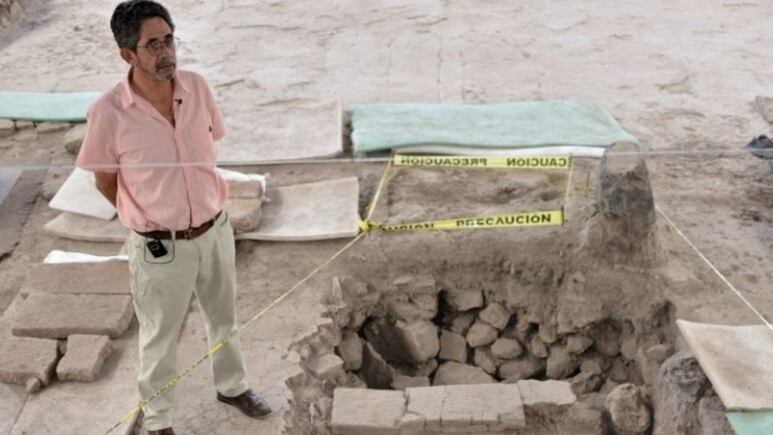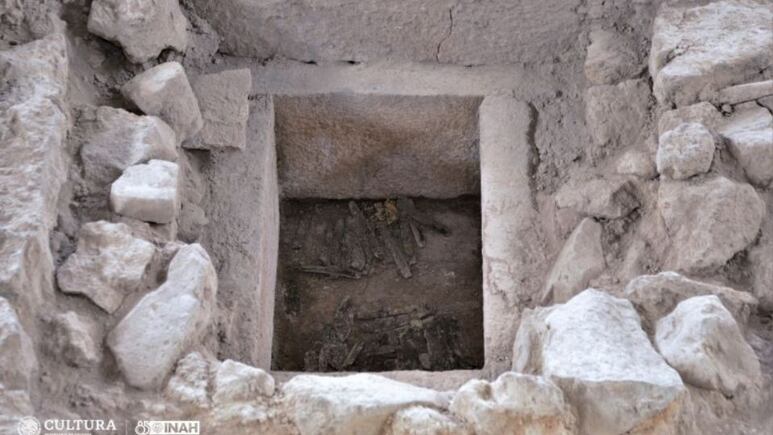INAH Discovers Pre-Hispanic Remains in Tlatelolco Over Seven Centuries Old
The discovery provides valuable insight into the ritual and religious practices of the ancient inhabitants of Tlatelolco

Despite Mexico City being one of the most urbanized areas in the country, pre-Hispanic remains can still be found among the streets, reminding us of life before the colonizers arrived. The National Institute of Anthropology and History (INAH) has made a significant discovery in the Tlatelolco archaeological zone, uncovering an offering over seven centuries old.
Publicidad
According to the official statement, this discovery, located in the southwest quadrant of the Mexico-Tlatelolco Ceremonial Precinct, includes a circular structure approximately 11 meters in diameter and 1.20 meters high, primarily covered in stucco and with a 70% state of preservation. This structure, dating back over 650 years, was initially identified in 2014 but was fully uncovered only a few days ago.
INAH Finds Pre-Hispanic Remains in Tlatelolco
Archaeologists found 59 small blades, seven obsidian knives, and blocks of copal inside the stone box. These items were placed to consecrate an architectural expansion of the Great Basamento, a fundamental structure in Tlatelolco's ritual life. The box was found 2.80 meters deep, indicating a ritual of self-sacrifice performed by Tlatelolco priests and leaders before placing the objects in the box.
Archaeologists believe these findings could have been part of Tlatelolco's sacred precinct and dedicated to one of the principal deities of the Mexica-Tlatelolco pantheon. According to the project leaders, the discovered offering contains a variety of significant elements, such as the skeleton of a newborn, bird bones, obsidian, maguey spines, copal remnants, a green stone bead, and ceramic figures.
Publicidad
This discovery adds to other important findings in the area, including remains of a Teotihuacan village dating from between 450 and 650 AD. This village, identified between March and June 2023, reveals multiple stages of cultural occupation, from pre-Hispanic times to more recent historical periods. The remains include canals, compacted floors, stone alignments, other structural elements, ceramics, and human bones.
Publicidad

Why Is This Discovery So Important for INAH?
Although it might seem insignificant, archaeologists affirm that the discovery provides valuable insight into the ritual and religious practices of the ancient inhabitants of Tlatelolco. Additionally, Tlatelolco was a significant economic and ceremonial center in pre-Hispanic times. The Great Basamento, compared to the House of the Eagles in Tenochtitlán, highlights the site's importance as a sacred space and military power, possibly dedicated to Tezcatlipoca, one of the most complex deities in the Mesoamerican pantheon.
Furthermore, disseminating these findings and their integration into the public tour of the Tlatelolco archaeological zone helps connect the community and visitors with their cultural heritage. This educational and conservation approach strengthens cultural identity and pride in Mexico's pre-Hispanic past.
To read this article in Spanish, visit HERE.
Publicidad
Publicidad
Más Leídas | Heraldo USA
Precio del dólar HOY en México: martes 15 de julio de 2025
Por Heraldo USA
Trump anuncia que la Cámara de Representantes votará por Ley Genius para hacer a EEUU líder de bitcoin y activos
Por Heraldo USA
Metro de Nueva York inundado, preocupa que aumenten inundaciones desde Ohio
Por Heraldo USA
EN VIVO: Sigue minuto a minuto la conferencia matutina de Claudia Sheinbaum HOY 15 de julio
Por Heraldo USA
Publicidad
Más noticias de Inah
Más noticias de México










